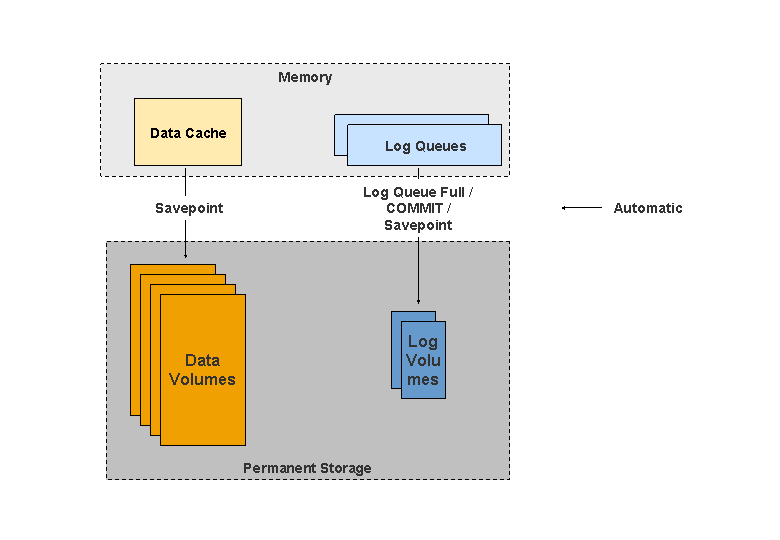 How Databases Store Data and Log Entries
How Databases Store Data and Log Entries 
Physical View
If a database user changes data in the database, the database system first stores the changed data in the data cache in the working memory and logs the changes in redo log entries in the log queue (also in the working memory).
More information: Working Memory Areas
In the following situations, the Pager tasks of the database system write the data changes from the data cache to the data area in permanent storage:
If the data cache is too full
This depends on, among other things, the ratio between changed and read pages in the data cache.
At savepoints
In the following situations, the Log Writer task of the database system writes the redo log entries from a log queue to the log area:
If the log queue is full
If the transaction was completed with a COMMIT
At savepoints
Log pages in the log queue that were not full at the time of writing remain in the log queue. The system fills these log queues and writes them to the log volumes again during the next write process.
More information:
The unit that the database system uses to write information to and read it from the permanent storage is a page of 8 KB. A page corresponds to a certain number of operating system blocks. Pages are often the unit used to specify memory and disk space.

Working Memory and Permanent Storage
Logical View
The database system uses the following organizational structures to store data in the database:
Page chains
Pages in B* trees
More information: Logical Access Structures

Logical Access Structures
How Is Logical Information Assigned to Physical Pages?
The database system stores the assignment of logical data pages to physical addresses in the converter.
More information: Converter